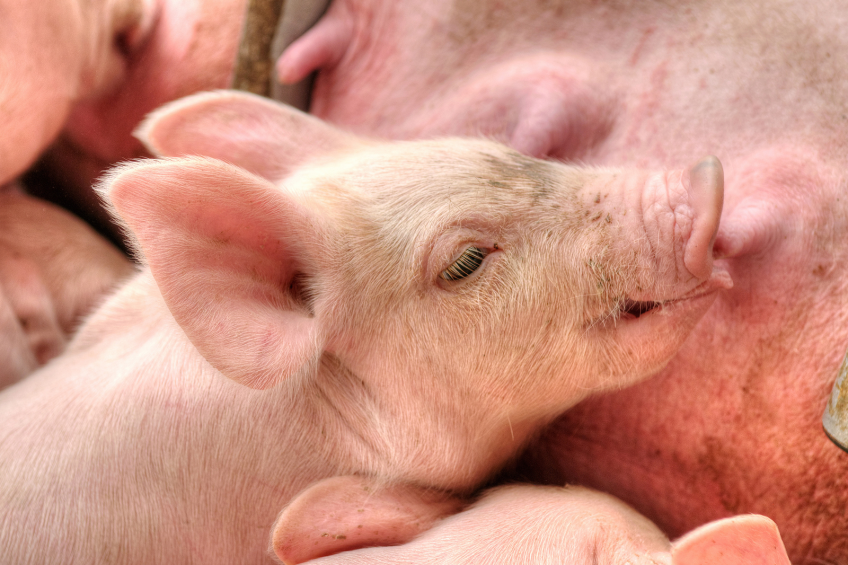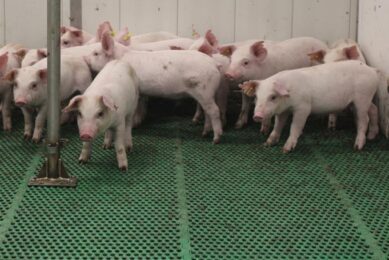Understanding early piglet development

Rightfully so, early piglet growth is one of the most widely discussed and researched topics in swine health and nutrition. There are countless problems associated with early piglet development, yet despite efforts to overcome these, producers leave growth potential, and ultimately money, on the table.
In general, piglet health is closely related to nutrition, and there are many factors to consider in early piglet development in regards to nutrition. Top of mind considerations are nutrient requirements, feed intake, growth, immunity and pre-weaning mortality. Then you have other topics, such as the impact of maternal feeding on progeny development, digestive physiology capacity and diet transition management. None of these concepts are new, but combined, they make early piglet management a careful balancing act of management and nutritional factors, and the slightest improvement to any of these factors can bring piglets closer to reaching their genetic potential.
In piglet production and nutrition, we rarely consider what we feed gestating sows and how it impacts developing embryos and resulting piglets. However, research has shown that the addition of chelated trace minerals to sow diets can increase not only the number of piglets born alive by three piglets per sow per lifetime, but also piglet birth weight by up to 9% (Figure 1).
Low birth weight increases pre-wean mortality and susceptibility to diarrhoea. Low birth weight is also an indicator of poor consecutive piglet performance, including average daily gain. It has been documented that increasing body weight by 1 kg at weaning results in 2 kg more at nursery exit and 4 kg more at market.
Figure 1 – Supplementation of chelated trace minerals* to sow diets can increase piglet birth weight by up to 9% over control.
A healthy gut
Gut health is something that is often only considered when there is an obvious issue, such as diarrhoea, because those two are very easily linked. Strategies to promote gut health are also closely considered in scenarios where antibiotic growth promoters are either limited or completely absent. Gut health challenges include poor nutrient absorption, poor growth performance, diarrhoea, immunity suppression and mortality.
Improvement of gut health has to focus on multiple bottle necks such as imbalanced gut microflora, gut morphology for proper nutrient absorption and undigested protein reaching the hindgut. These challenges combined lead to bacterial overgrowth, depressed performance, disease, and ultimately the production challenges seen at a clinical level. There are many feed additives used today to optimise gut health, including organic acids, enzymes and trace minerals.
The diet changes that a piglet experiences in the first 80 days of life are vast. The gut is expected to manage these changes, even when, at a ration level, a stepwise approach is used. The change is still substantial for the gut microflora. Issues which arise are often times quickly linked to a gut health issue, but, when looking deeper at the digestive physiology capacity, there is more to be understood and can be done to better manage this transition for piglets. Weaning reduces endogenous protease production. Digestibility coefficients, in many cases, don’t accurately represent the nursery phase. Gut morphology changes as piglets grow older. All of these things, when considered and managed together, help manage the physiology of digestion, and fundamentally improve gut health.
It is well understood that young piglets have limited feed intake and aren’t able to meet the nutrient requirements to perform to their genetic potential. There are too many challenges to overcome – a completely new diet and new way of eating, and social and environmental stressors, to eat to their full potential in a commercial setting. But with growth being so important in the nursery phase, feed intake must be maximised so that pigs consume the required nutrients for optimal growth. Increasing feed intake during the first week post-weaning not only promotes growth and overall health during the nursery phase, but it also boosts performance during the entire grow-out period.
Phase-to-phase transition
The main goals of an early piglet nutrition programme are to avoid post-weaning growth depression, help piglets adapt to a grain-based diet, and make this transition as rapidly as possible. Because piglets undergo dramatic changes in digestive development, phase feeding is necessary to closely match nutrient requirements and digestive capabilities, to get maximum performance in the nursery. Phase feeding aims to make transitioning from one feed to another easier on the piglets’ GI tract. However, other nutritional tools like enzyme supplementation can help to ease this transition on piglets. Especially when few feeding phases are used, these nutritional strategies can help to minimise the inherent excess of nutrients in the beginning and deficiency in the end of each phase, which can harm growth and health.
Feed costs make up 70-80% of production costs. Variability on digestibility in feed ingredients of piglet diets can increase feed costs even more, and harm growth and health. The closest match of nutrient requirements and nutrients provided in feed will result in lower feeding costs and better growth and health. Along with precise formulation, supplementing piglet diets with protease enzymes can help to control variability of nutrient digestibility which will reduce production costs and maximise both nutrient availability and digestibility so as not to upset gut health in vulnerable piglets.
Soybean meal (SBM) is commonly used as the primary protein source in swine diets. While some proteins in SBM are more easily digested, others can be quite difficult, especially for newly weaned piglets. Proteins that cause piglets the most problems include glycinin, which makes up about 40% of the total soybean protein, and β-conglycinin, which makes up about 30% of the total protein. Soy proteins glycinin and β-conglycinin have been found to be antigenic within the intestinal lumen.
Growth enhancement
With consumer pressure, and regulatory mandates in some cases, to end the use of antibiotic growth promoters (AGPs), swine producers are looking for alternatives to recoup as much growth as possible while maintaining production costs. Alternatives to AGPs such as probiotics, enzymes, prebiotics and organic acids have the ability to assist in animal production similarly to antibiotics, but without the concern of antimicrobial resistance. There will not be one ‘silver bullet’ to replace AGPs, so a multiplatform approach must be used to improve nursery growth and performance.
The myriad of problems encountered in early piglet development are by no means easy to solve, and will have a life-long impact on the pig’s performance and producer’s profitability. However, with a deeper understanding of the post-weaning challenges and how they are interrelated, a multifactorial approach can be implemented to improve the growth performance of the young pig.












